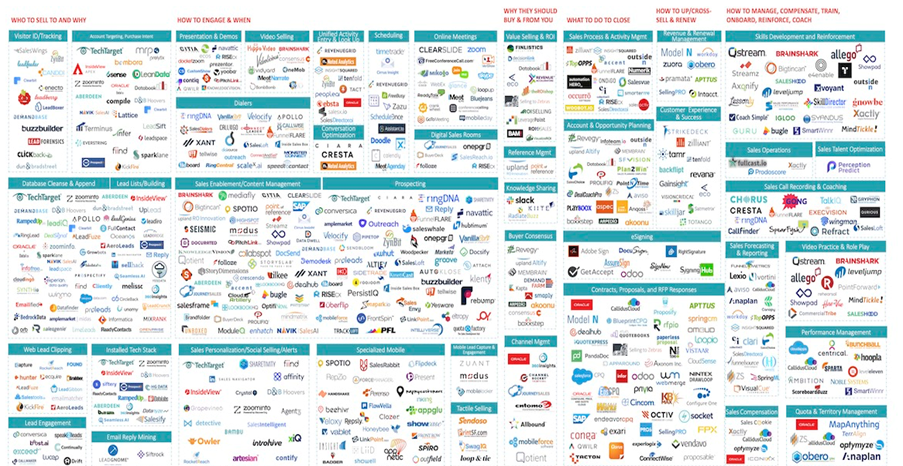In today’s fast-paced business environment, many companies are making significant investments into sales productivity technology and allocating training budgets to the use of this technology.
However, there is a concern this is not yielding results in terms of sales improvement, with many companies not seeing the anticipated return on investment (ROI) in sales performance.
Why are we investing in technology?
Unsurprisingly when faced with the questions below, sales technology vendors tell us the answer is their technology. For example –
“Do you want more revenue?”
“Do you want more qualified leads?”
“Do you want to close deals quicker?”
“Do you want greater sales productivity?”
“Do you want more calls with prospects?”
Equally, the amount of technology available today is mind-boggling, with over a thousand sales technology companies providing solutions, and growing. This is creating a fear of missing out (FOMO) culture among sales leaders and revenue operations professionals.

This technology is accessible and available to every company, including your competitors. This means it’s not a competitive advantage. How we use sales technology is what makes the difference. Using the analogy of a car ownership, having one which sits on the drive doesn’t mean much. However, this changes when someone applies expert driving skills. The same is true of sales enablement technology; almost every enterprise has it, it is how you use it that counts.
According to the Gartner Group, companies are investing billions of dollars in Customer Relationship Management (CRM) and Sales Force Automation (SFA) technology. However, there is a disproportionately low investment in improving selling activities. For example, a software company allocated 80% of its sales training budget to CRM technology training, while only 20% was dedicated to developing interpersonal skills and building customer relationships. Consequently, their sales team are not connecting with customers or effectively closing deals. They had lost the human sales skills.
While salespeople’s technology competence can enhance a customers’ buying process and provide a competitive edge, the real investment needs to be in both technology and people, with great salespeople seamlessly transversing the digital and human worlds.
Why invest in sales training
It is crucial to prioritise the ‘customer’ aspect in ‘Customer Relationship Management’ and refocus on the fundamental principles of selling. While big data and customer intelligence play a vital role in the sales process, it remains the sales professionals’ ability to create and close business that is key.
Companies who have postponed sales training often experience a decline in sales quota achievement unless their sales teams operate as simple order-taking call centres. For sales professionals tasked with acquiring new business, the lack of sales training involving role-playing, coaching, and feedback will hinder their success.
Consider a scenario where a company relies heavily on technology to interact with customers. Can this technology enable the sales team to connect with customers personally, uncover their unique needs, and tailor solutions accordingly? Or could the sales team be replaced by a simple ‘shopping cart’ system? It is essential to analyse what insights the ‘big data’ provides about customers and how to leverage that information to gain a competitive edge in sales.
In summary companies should implement a holistic approach combining relationship-selling techniques with technology to influence customers’ decision-making processes effectively.
Examples of this successfully being applied include:
- A financial services company integrated its CRM system with a sales training program focused on building trust, active listening, and tailoring solutions based on customer needs. By leveraging technology to gather customer insights and applying relationship selling skills, their sales team achieved a 30% increase in client retention and a 20% growth in cross-selling opportunities.
- A manufacturing company invested in a new sales platform and a comprehensive face-to-face sales training program that included role-playing exercises, coaching sessions, and personalised feedback. As a result, their sales team’s closing rate increased by 25%, leading to a substantial boost in revenue and profitability.
